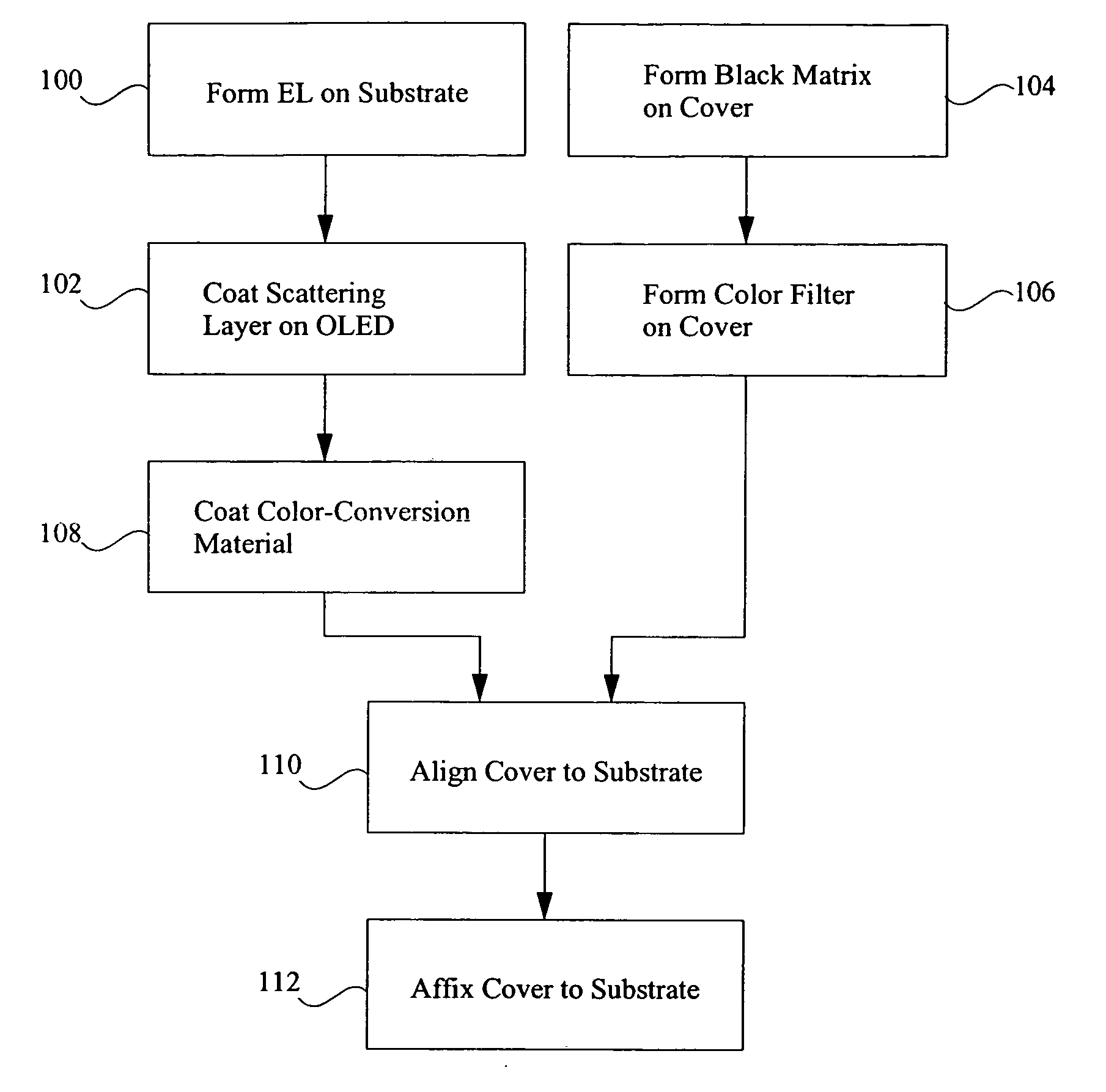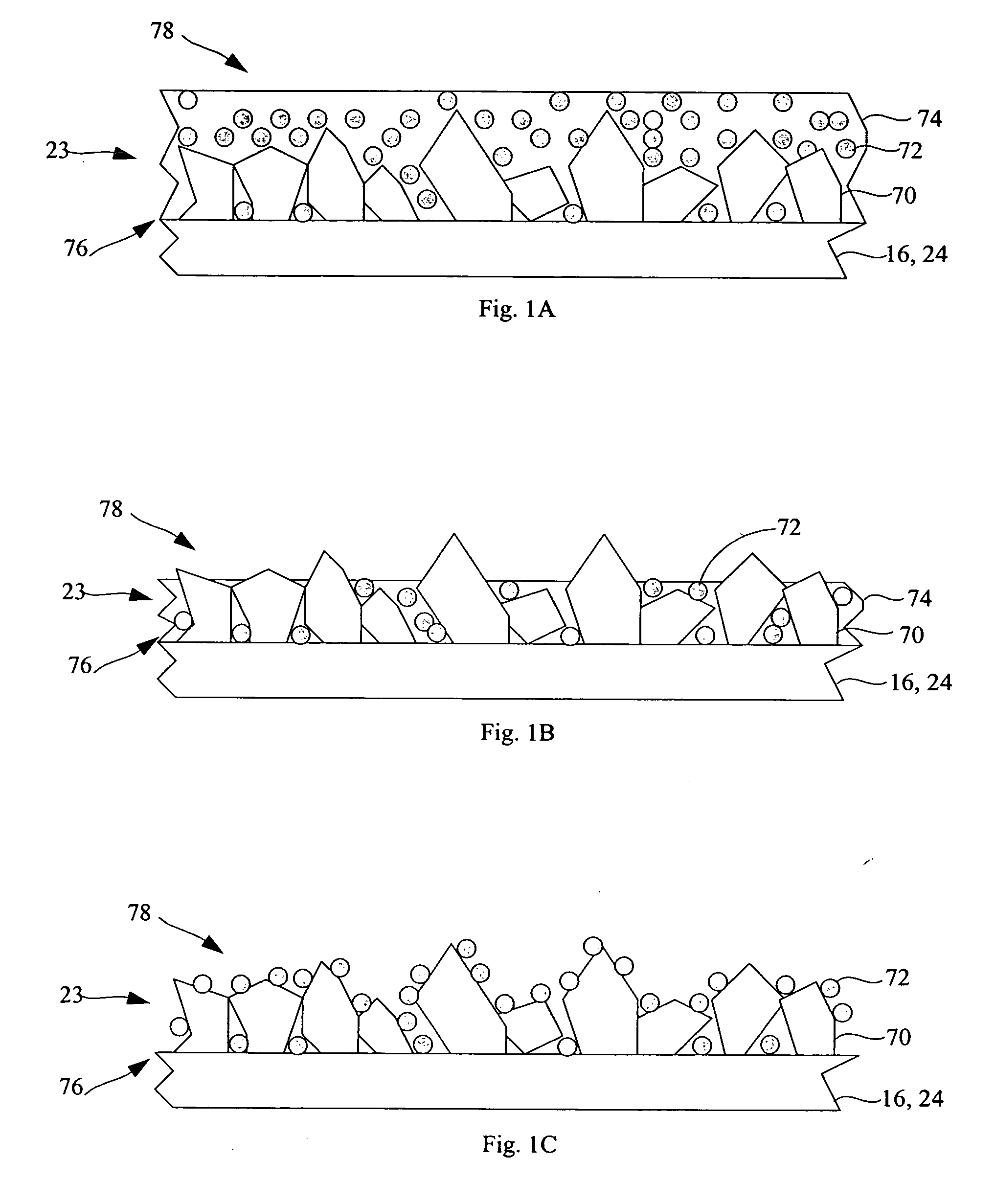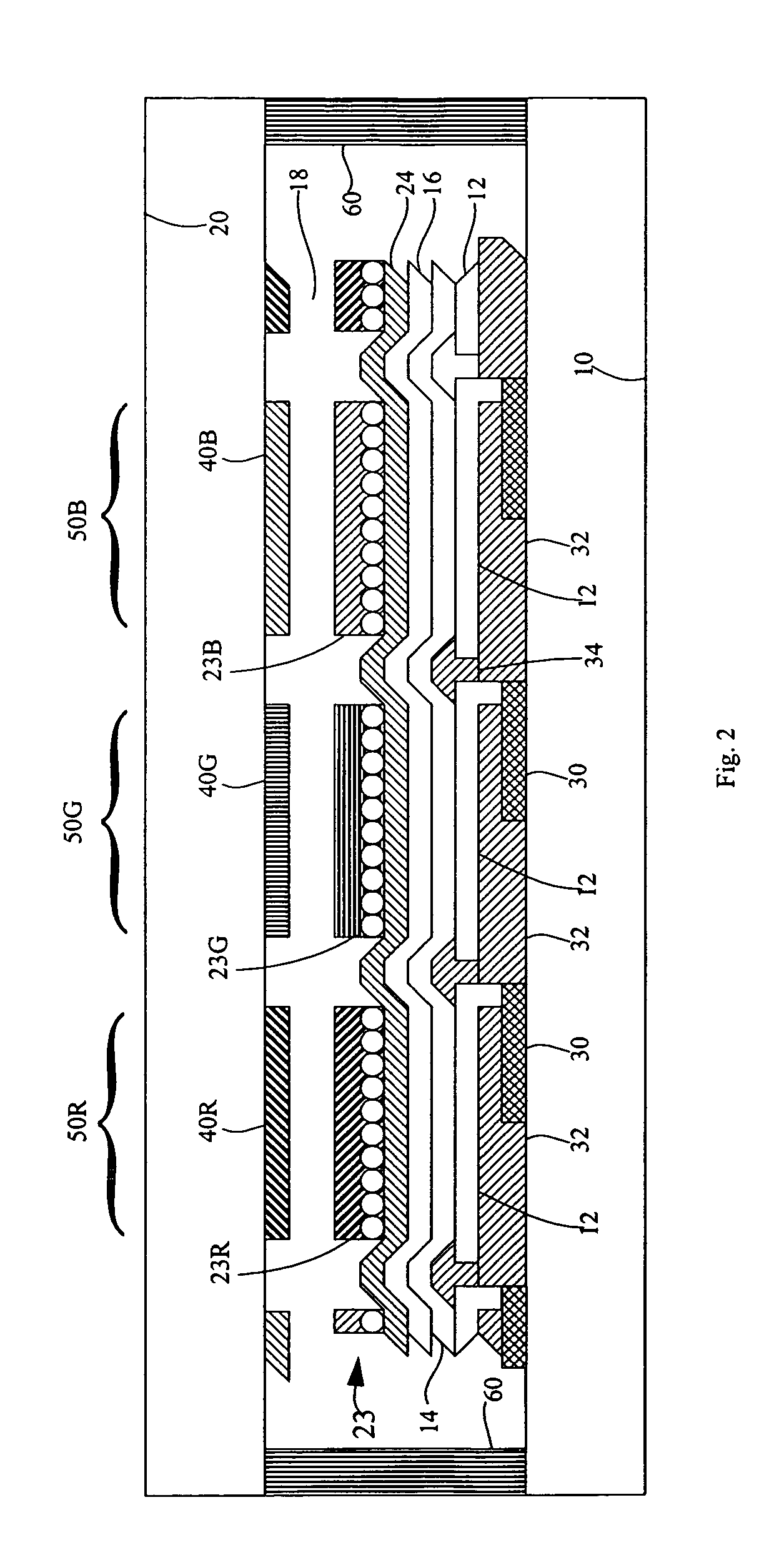Light-scattering color-conversion material layer
- Summary
- Abstract
- Description
- Claims
- Application Information
AI Technical Summary
Benefits of technology
Problems solved by technology
Method used
Image
Examples
Embodiment Construction
[0025] Referring to FIG. 1A, in one embodiment of the present invention, a light-scattering color-conversion material layer 23 having two sides 76, 78, comprising first light-scattering particles 70 intermixed with second different color-conversion material particles 72. The first light-scattering particles 70 are integrally intermixed with the different color-conversion material particles 72 to form a common light-scattering color-conversion material layer 23 with at least one constituent having varying concentrations at different locations through the thickness of the light-scattering color-conversion material layer 23. In particular, in the embodiment of FIG. 1A, the concentration of the light scattering particles 70 is greater towards a first side 76 of the layer 23 relative to the concentration of light-scattering particles 70 towards the opposite side 78 of the layer, and the concentration of the color-conversion material particles 72 is less towards the first side 76 of the l...
PUM
| Property | Measurement | Unit |
|---|---|---|
| Size | aaaaa | aaaaa |
| Size | aaaaa | aaaaa |
| Nanoscale particle size | aaaaa | aaaaa |
Abstract
Description
Claims
Application Information
 Login to View More
Login to View More - R&D
- Intellectual Property
- Life Sciences
- Materials
- Tech Scout
- Unparalleled Data Quality
- Higher Quality Content
- 60% Fewer Hallucinations
Browse by: Latest US Patents, China's latest patents, Technical Efficacy Thesaurus, Application Domain, Technology Topic, Popular Technical Reports.
© 2025 PatSnap. All rights reserved.Legal|Privacy policy|Modern Slavery Act Transparency Statement|Sitemap|About US| Contact US: help@patsnap.com



